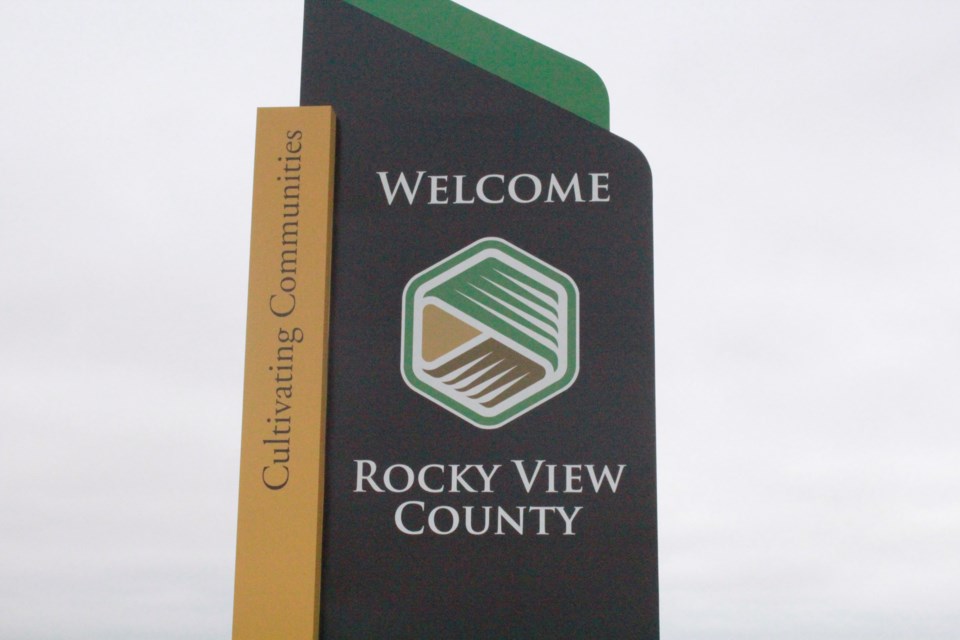Rocky View County’s (RVC) 2022 operating and budget plan and capital budget was approved with a four per cent tax increase for residents on Jan. 18, following years of low or no increases.
Council gave its stamp of approval for the municipality’s budget on Jan. 18, following two days of budget deliberations. The general operating budget was approved at $197.3 million, with a capital budget totalling $19.7 million for 22 projects.
“Inflation and the rising costs of goods and services continue to increase pressure on the cost of delivering services within the County. Despite these challenges, Rocky View County continues to be a model of financial sustainability with one of the lowest tax rates in the province,” stated a press release from the county on Jan. 20.
Of the $19.7 million in capital projects, $839,000 is tax-supported funding, prioritizing external funding sources, including the Municipal Sustainability Initiative (MSI) grant, for eligible projects to minimize the impact on tax funding.
Budget finalization will occur in April when the taxation rates are established.
Prior to approving the operating plan and capital budget, council made several amendments.
At the end of the budget presentation on Nov. 18, council discussed four items with a potential budget impact, including additional sidewalk clearing in Langdon, mosquito control in Langdon and Bearspaw, the Storm Drainage Improvements Policy, and the reinstatement of dog licensing fees.
Ultimately, council passed three of those four items, excluding only the mosquito program.
Council included the concrete sidewalk on the east side of main street in Langdon between Langdon Park and Railway Avenue as part of the regional pathway system. This decision means that section will be plowed by county staff moving forward at an annual cost of $5,500 absorbed in the budget.
Kochan said a one per cent tax rate increase equals roughly $750,000 added to the budget.
That means the added plowing costs wouldn’t move the needle in regards to a tax increase, interim CAO Kent Robinson said.
The only two items with a potential tax rate impact were the added sidewalk clearing in Langdon and the mosquito program.
Council chose not to include the mosquito program, which includes spraying insecticide for mosquitos in both Langdon and Church Ranches. Instead, they requested more information regarding engaging other communities in this program.
Administration clarified they could not implement a specific tax on the two communities who were to benefit from the mosquito program.
“We’re going down the path of picking and choosing who gets service and who doesn’t. This is a hard one,” said deputy mayor Crystal Kissel, who added a bigger conversation was needed on this issue.
The Storm Drainage Improvements Policy was also added to the budget plan, which refers to a program with around 30 projects related to flood mitigation in the county, limited to $400,000 in expenditures per year.
This policy will be sourced from the stormwater drainage mitigation measures reserve assigned to the program. Administration will transfer funds from that reserve to the program and conduct a workshop on May 30 to select projects with the best benefit-to-cost ratio under the policy.
Dog licensing fees with new rates were also reinstated. From the revenue collected, council hopes to provide a grant to the Cochrane and Area Humane Society, an item that will come back to council at a later date.
Starting on Jan. 1, 2023, a dog license for a spayed or neutered dog will cost $15, while a license for a non-spayed or neutered dog will cost $20.
Robinson noted, the dog licenses would add roughly $60,000 of revenue to the county’s coffers.
According to the budget document, the county began with an aggressive expense reduction target of 10 per cent to arrive at this operating budget.
Several cost increases put pressure on the county, including increased provincial policing costs, insurance, and IT equipment and application fees.
In addition, the Consumer Price Index (CPI) year over year for October 2020 was 0.7 per cent for Canada and 1.1 per cent for Alberta.
In 2020, council approved a three per cent tax decrease, which was funded through a reserve transfer from the tax stabilization reserve.
In October 2021, the CPI change year over year for Canada was 4.7 per cent and in Alberta it was 4.3 per cent.
For the 2021 budget, council approved a zero per cent tax increase, which continues to pose challenges when compared to the CPI and increasing costs.
According to the draft budget document, the county’s population has increased by 38.6 per cent since 2000, to a current population of approximately 40,000 residents.
The county’s assessment base was $13.9 billion in 2010 and $18.3 billion in 2020, representing a 31.7 per cent of assessment growth in 10 years.
The 2022 operating and capital base budget are available for public viewing on the RVC website, or access via RVC’s Facebook and Twitter social media announcements.




